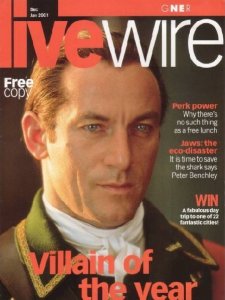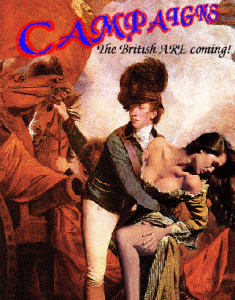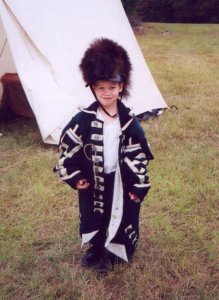Podcasting is a form of self-publishing, and many
traditionally published authors are quick to presume that podcasters give away
their works for nothing. That presumption is inaccurate. Furthermore,
podcasting has exciting applications for authors who are published
traditionally.
I'd like to dispel some of the myths surrounding the
technology of podcasting. Today’s blog entry takes a look at the nuts and bolts
and value of podcasting via an interview with two authors from science fiction and fantasy (SF&F), Mur
Lafferty (Playing for Keeps) and P.G. Holyfield (Murder at Avedon
Hill). I met both at a panel discussion in Raleigh back in May. (Watch most of the discussion about podcasting on YouTube.) Mur and P.G. have developed tremendous fan followings through the technology of
podcasting.
SA: Hi Mur and P.G., and thanks for chatting with me. How
long have you been podcasting, and how many regular listeners do you have?
ML: I've been podcasting since December 2004, almost four
years. I have several podcasts, so it's hard to say, but I'd estimate about
5000 regular listeners.
PGH: I started podcasting in February 2007. I released
Episode 1 of Murder at Avedon Hill on my website in June 2007 and on Podiobooks.com in November 2007. My earliest chapters have been
downloaded over 5000 times, and I’m approaching 3000 downloads with my later
chapters.
SA: Demographically, who are your listeners?
ML: Science
fiction fans, geek mothers, beginning writers. Mostly people over 25.

PGH: I have only general data about my listenership. As
around 90% of podcast listeners do not provide feedback, it’s hard to figure
much out about them, other than what country they live in.
Of the listeners that have provided feedback through
email, voicemail, and reviews, I have listeners on six of seven continents.
While podcast listeners do skew younger than book readers when you look at them
as a whole, a great percentage of my most interactive listeners are over 30.
I have been greatly pleased to see the mystery fans that
are enjoying the novel, especially those that say they usually do not like the
fantasy genre. (Note: Murder at Avedon Hill is a mystery in the spirit of the
medieval mysteries of Ellis Peters or Susanna Gregory, but set in a
fantasy world where magic works, monsters exist, and the gods can choose to
live mortal lives in order to directly affect events in the world.)
I also think the mystery setup has brought in more female
listeners compared to the podcast average. My evidence to support this is based
on feedback and talking to other podcasters about male and female listenership.
SA: As an option to traditional publishing, a number of
writers self-publish via podcasts. Although the work of these folks can be
protected by the Creative Commons, they're essentially giving their
books away. Obviously you're getting something from podcasting besides
contracts, advances, and royalties, although I'm sure you wouldn't mind earning
plenty of money for your efforts. Initially, what attracted you to podcasting
and made it worth your while?

ML: When I got started in podcasting, it was an entirely
new way to express yourself and seemed a fun new thing to try. Took me a while
to podcast fiction, but when I did, I started building an audience of 20,000
that I hope will follow me with the print version of Playing for Keeps. (Note:
Mur's four novellas are available via podcast. Playing for Keeps, her first
novel, has been podcasted and is also her first work to go into print.)
PGH: In April 2006 I listened to Brave Men Run, by Matthew
Wayne Selznick. I immediately knew that I was going to podcast Murder at
Avedon Hill. I love the DIY ethic, and once I started listening to podcasts
that were out there, I knew I could do it and believed I could do it well.
SA: How has podcasting taken your writing career to the next
level?
ML: I write on a more regular basis now, knowing I have
an audience waiting for it. Building that audience has shown me to be an
effective marketer, which makes me more attractive to publishers.
PGH: Podcasting has allowed me to put my work into the
hands of consumers. Their feedback has
been invaluable, and in the process, I have learned how to market
myself. I hope to use this experience in the future with respect to pursuing
agents and publishers.
SA: Why do you continue to podcast?
ML: It's fun, and I want to continue to give away content
to the people who support me. There's also so much about this medium we have
yet to explore, and I want to be one of the ones doing that.
PGH: Unlike Mur, this is my first podcast novel. At this point I've released around 70% of the
novel. I hope to finish the novel in November. At that point my second
novel should be completed and ready to podcast. No matter where my writing
leads me, I plan to continue podcasting my work.
SA: During the panel discussion, you mentioned that the ideal length of a podcast
would be your listener's commute, somewhere between fifteen and thirty minutes.
A podcast can be produced simply, by the author recording and posting readings
from his/her own book. On the complex end, the author might hire voice talents
to represent each book character and incorporate sound effects. What approach
do you use?
ML: I go the simple route. I don't have time to do a full
voice cast project for fiction. Right now, I'm doing a short audio drama, about
ten-minute episodes, and the work involved is staggering.
PGH: I am at the audio drama end of the spectrum,
although audio drama usually means a focus on dialogue and the use of sound and
dialogue to replace descriptive narration. I am podcasting the novel fully but
incorporate a large voice cast (over thirty readers), music, ambient noise, and
effects. While this adds layers of complexity in producing the podcast, it
results in a product that listeners seem to appreciate and that I am very proud
of.
SA: Where do you record your podcasts?
ML: At home in the spare bedroom.
PGH: I built a small studio (basically foam padding in a
closet) in my basement. It’s around 6’ x 8’ in size and allows me to create
audio without worrying about ambient noise when I'm recording.
SA: Approximately how much preparatory time goes into your
usual podcast?
ML: Depends on which podcast I'm doing. If it's the
chatty one, little to no prep. If it's my writing podcast, I do some notes and
bullet points and make sure I have my emails ready to read, so about an hour.
PGH: My episode timings are tied to chapter length and
usually run between 25 and 35 minutes. For me, a 30-minute episode can take me
anywhere from 15 to 25 hours to put together. Some of this is due to the
organizational requirements tied to having 30-plus guest voices. Recording,
editing, and finding or creating appropriate sound effects takes up the bulk of
this time.
Contrast this to my friend Nathan Lowell, author of the "Golden Age of the Solar Clipper" novels, who spends no more than two and
a half hours putting together a 20- to 30-minute episode. But his is a straight
read with the same intro/outro music for each episode. There is no right or
wrong way to do a podcast novel, as long as the story and sound quality meet
listener expectations.
SA: How often do you usually post a podcast?
ML: I try for weekly, but it's closer to
bi-weekly. If it's fiction, I go for weekly.
PGH: Due to my production requirements, I release episodes
every 10 – 14 days, sometimes longer. Podcast novelists usually release an
episode every week, so some listeners have stopped listening due to my release
schedule and told me they will come back as soon as I’m done with the novel. I
understand their concerns and do my best to be consistent. Consistency is the
key. Now that I am on a more regular schedule, even though it isn’t every seven
days, I’ve been able to level set and meet listener expectations.
SA: What types of media files do you include in a typical
podcast?
ML: 95% of the time it's audio files, but I have posted
.pdf and video files.
PGH: The audio podcast file standard is the .mp3. At the
upper end of .mp3 settings, the audio quality is high enough that it sounds
good to most consumers. But the RSS feed — the scripting that allows people to
subscribe to websites, blogs, and podcasts — can accept many different file
types.
Recently I have
begun releasing .pdf files with artwork and maps from my fantasy setting.
SA: Podcasting has a "geek mystique" surrounding
it. SF&F authors employ the technology in far
greater numbers than do authors of other genres. So let's dispel some of that
mystique for the non-SF&F writer who wants to start podcasting. At the panel in May, you
discussed site hosting with an entity such as DreamHost or Libsyn, and the importance of making sure you have plenty of bandwidth. In
other words, plan up-front for a big following. What software and equipment do
you need to get started?
ML: You can get started with a $30 microphone from Target
and the free, cross-platform software Audacity or GarageBand, a
freebie that comes installed on Macs.
PGH: I addition to basic equipment, you need to consider
your hosting needs. For example, I purchased a two-year hosting package at
DreamHost for $99 that covers every possible listener download scenario I
should experience.
You can add other hardware items to improve your overall
sound — for example, mixers, required for better microphones. If you get
hooked on creating audio and want to take that next step, join a podcasting
group such as the one at Yahoo or the Podiobooks.com Community and seek advice.
As far as websites go, the easiest thing to do is to set
up a WordPress site after you have server space. Most hosting services
provide a one-click option to install a WordPress blog. There is a plug-in for
WordPress called PodPress. This plug-in makes podcasting a much more efficient
process.
SA: What technical/geek background do you have? Any degrees
in computer science, for example, or courses in computer languages?
ML: Mostly self-taught. I'm a liberal arts geek. I
learned HTML in 1995 and learned this audio stuff from my husband in 2004. My
previous job at luluTV helped me learn the video side.
PGH: I have always been interested in computers, and
before I became a stay-at-home dad, I worked as a testing coordinator at a
financial institution, testing online banking applications. As a result I am
ahead of the curve, technically speaking. But I am one of those people who know
just enough to break things.
SA: What is the application of podcasting for an author
already in print and not self-published or vanity published?
ML: Branching out the audience, keeping readers
interested between books, and breathing life into out-of-print publications.
Not to mention supplementing your content, fiction or non-fiction, with other
media.
PGH: Podcasting not only allows new and undiscovered
authors to build an audience, but gives small press and midlist authors a
great opportunity to increase their fan base. The most important thing that
podcasting gives an author is an aural connection to their listeners and
readers. Listeners may not be paying for content, but they are making what some
would say is an even more important investment in you: their time. If you
deliver a quality work and the listener invests the 20 – 50 hours required to
listen to that work, you have created a connection and a relationship that
print-only authors do not have with their readership.
Print authors such as Tracy Hickman and Michael A.
Stackpole are successfully leveraging podcasting. Hickman podcasted his
out-of-print novel, The Immortals, and now it is being re-published.
Stackpole’s Fortress Draconis podcast has introduced his fiction to a new group
of potential consumers — consumers who may go out and purchase his other
novels that are in bookstores today.
SA: What examples have you seen of podcasters making the
transition into traditional print with a small, medium, or large press?
ML: From Scott Sigler and J.C. Hutchins and
their large deals with Crown Publishing and St. Martin's Press,
to myself and Christiana Ellis and our small-press deals with Swarm
Press and Dragon Moon Press. More podcast authors with audiences
are getting attention, and I think it's going to keep happening as long as
publishers keep an open mind about digital media.
PGH: To build on what Mur said, Sigler is the most
successful podcast author to-date. Crown was intrigued because he has more than
40,000 listeners. Hutchins has nearly as many listeners, and that caught the
attention of St. Martin’s Press. Swarm Press, Mur Lafferty’s publisher, also
picked up Matthew Wayne Selznick’s Brave Men Run. And Matt Wallace recently had a short story anthology released by Apex Book Company. Many
stories in Wallace's anthology had already been released in podcast form.
SA: Any resources, including web sites and blogs, about
podcasting that you want to recommend?
ML: I'm co-author of Tricks of the Podcasting
Masters, so of course I'd recommend that.
Podcast411.com is on hiatus, but the site itself has a great deal of
information about podcasting on it.
PGH: Also, Podcasting for Dummies and its
companion podcast are a good place to start.
Here's a great short video on YouTube explaining
podcasting.
And here's a decent podcaster starter package from
an audio website.
SA: What's your next project?
ML: I just launched "The Takeover," my audio
drama about zombies in Corporate America, on podcast. My first novel, Playing
For Keeps, previously podcasted, is available in print 25 August 2008.
PGH: I am writing my second novel, tentatively titled The
House that Time Forgot. It’s another cross-genre piece, a mystery/fantasy with
more of a ghost story feel to it. It’s shorter and won’t take me a year and a
half to podcast.
SA: Excellent information. Again, thanks for being my guests today, P.G. and Mur.
Next up: a presentation for "Prologue," the
Wilmington Star-News/WHQR book club meeting in Wilmington, NC on 11 August.






